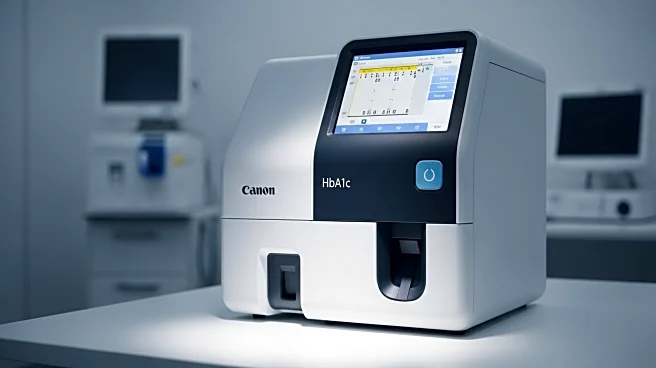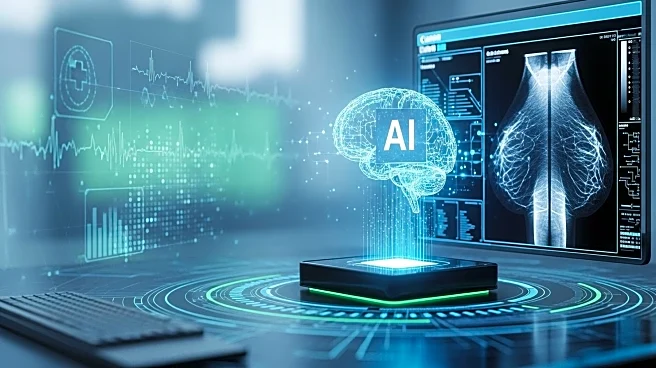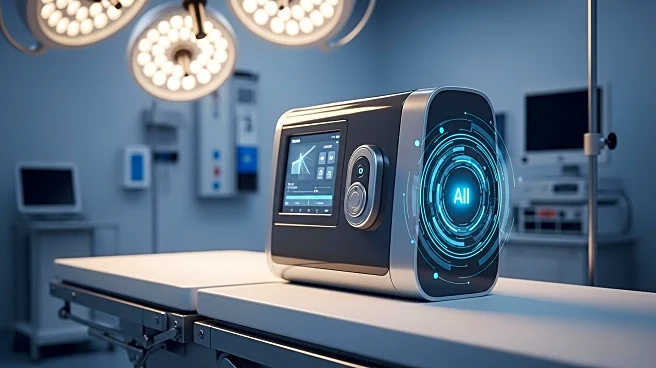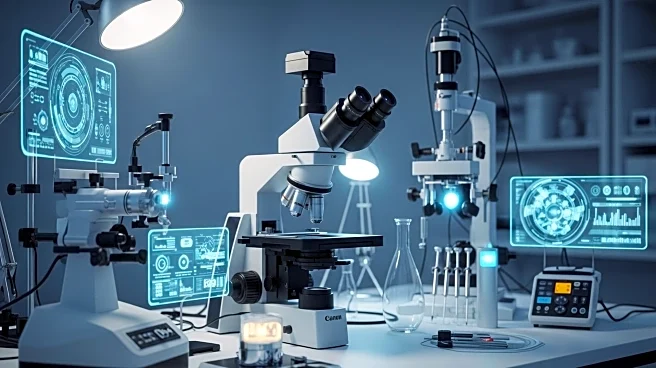What is the story about?
What's Happening?
A recent study has explored the potential of circulating extracellular vesicles (EVs) as predictive biomarkers for patients undergoing transjugular intrahepatic portosystemic shunt (TIPS) placement. TIPS is a procedure used to manage complications of portal hypertension, a condition that significantly affects cirrhotic patients. The study involved a retrospective analysis of 141 patients with severe portal hypertension who underwent TIPS insertion at two German hospitals. The research aimed to evaluate the prognostic significance of EVs, which are small lipid membrane structures released by various cell types and known for their role in intercellular communication. The study found that EVs could potentially serve as novel biomarkers for predicting outcomes in these patients, offering a new avenue for early diagnosis and prognosis in the management of portal hypertension.
Why It's Important?
The findings of this study are significant as they suggest a new method for improving the prognosis of cirrhotic patients undergoing TIPS procedures. Portal hypertension is a major cause of morbidity and mortality in these patients, and current methods for predicting outcomes are limited. By identifying EVs as potential biomarkers, healthcare providers could better assess the risk of complications and tailor treatments accordingly. This could lead to improved survival rates and quality of life for patients with cirrhosis. Additionally, the study highlights the broader potential of EVs in medical diagnostics, which could extend beyond liver disease to other conditions where early detection and prognosis are critical.
What's Next?
Further research is needed to validate these findings and explore the practical applications of using EVs as biomarkers in clinical settings. This could involve larger, multicenter studies to confirm the predictive value of EVs and refine the methods for their measurement and analysis. If successful, this approach could be integrated into standard diagnostic protocols for cirrhotic patients, potentially leading to more personalized and effective treatment strategies. Additionally, the study opens the door for exploring the role of EVs in other medical conditions, which could revolutionize the field of liquid biopsy and non-invasive diagnostics.
Beyond the Headlines
The use of EVs as biomarkers also raises important ethical and regulatory considerations. As with any new diagnostic tool, there will be a need to ensure that the methods for detecting and analyzing EVs are accurate, reliable, and accessible to all patients. There may also be implications for patient privacy and data security, particularly if EV analysis becomes part of routine medical care. Furthermore, the development of EV-based diagnostics could have significant economic impacts, potentially reducing healthcare costs by enabling earlier and more accurate disease detection.
AI Generated Content
Do you find this article useful?













